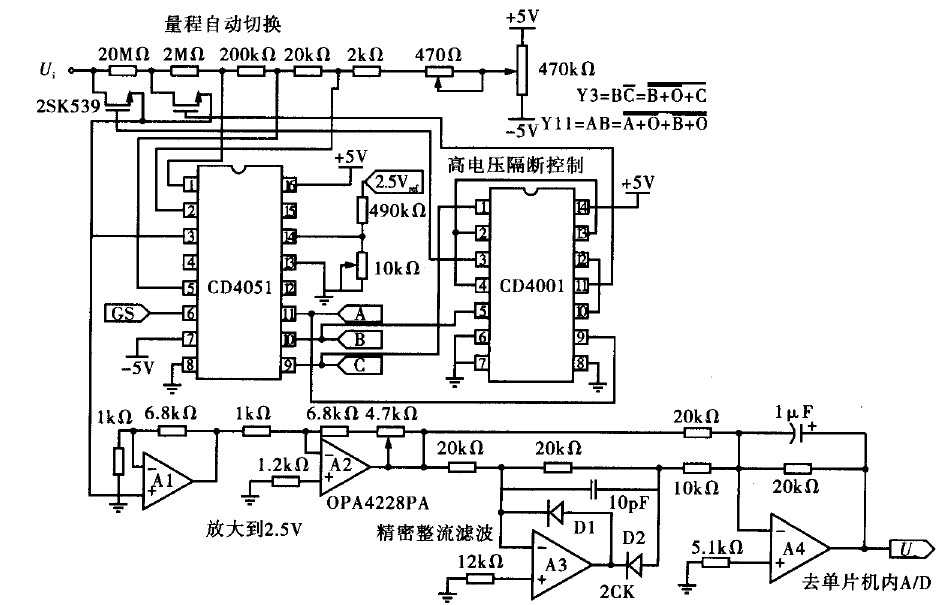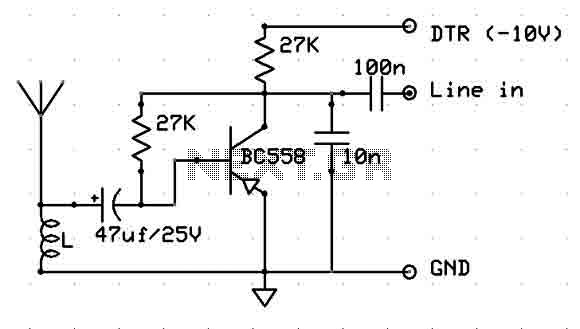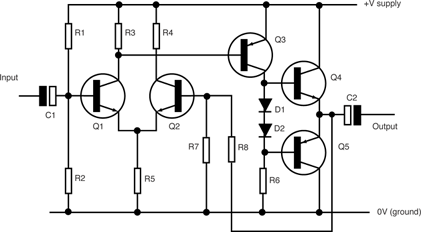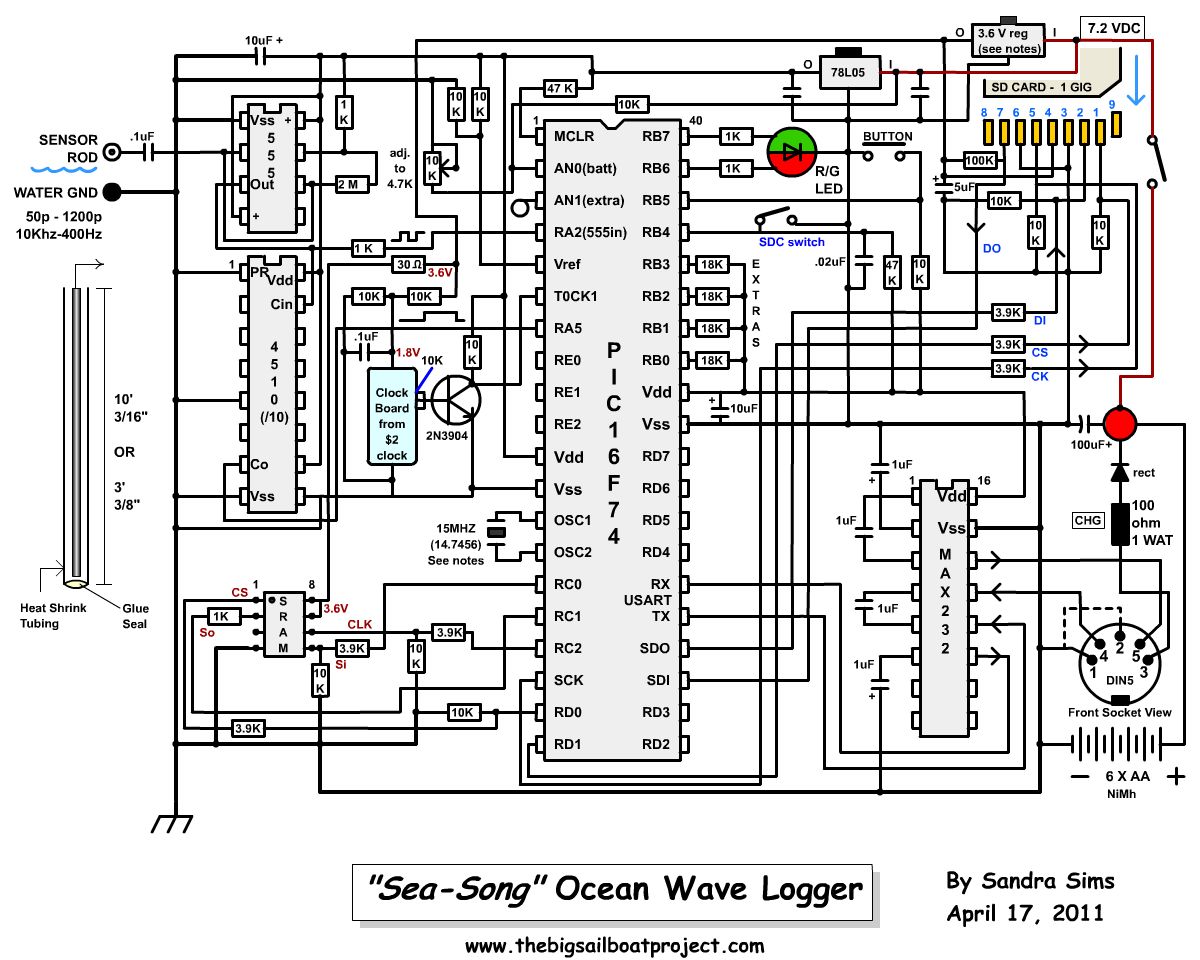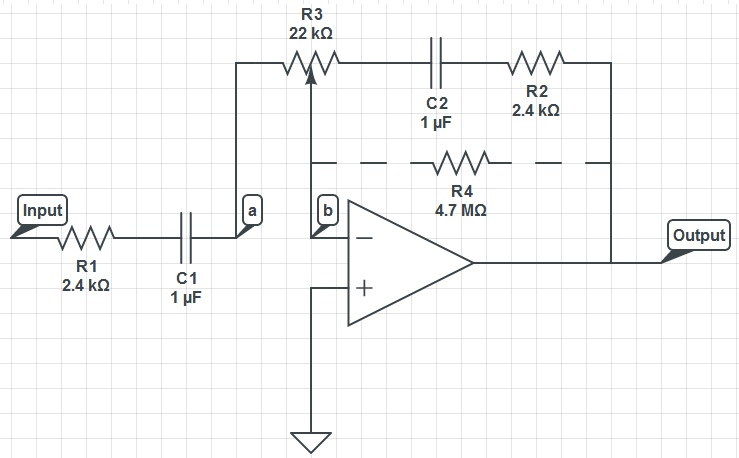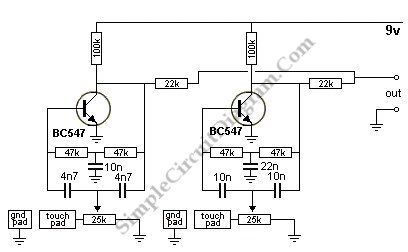
ta8122 am fm radio receiver electronic project circuit design
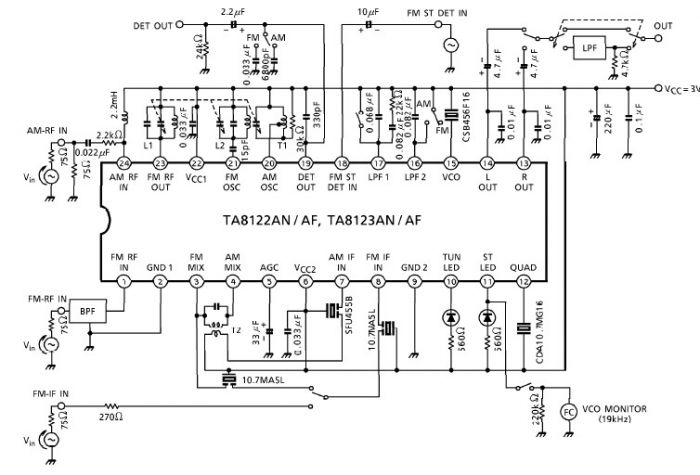
A simple low-power AM/FM radio receiver electronic project can be designed using the TA8122 integrated AM/FM receiver, manufactured by Toshiba Semiconductor. This radio receiver circuit is suitable for portable radio applications and similar devices. The TA8122 radio receiver circuit supports a wide input voltage range from 1.7 volts to 7 volts, but for this AM/FM radio receiver circuit, a 3-volt DC input voltage is required (two 1.5-volt batteries can be used).
The TA8122 integrated circuit (IC) is a versatile solution for building low-power AM/FM radio receivers. It is designed to operate efficiently in portable applications, making it ideal for battery-operated devices. The circuit can receive both AM and FM signals, enhancing its usability for various radio frequency bands.
To construct the receiver, the following components are typically required: the TA8122 IC, two 1.5V batteries (for a total of 3V), a few passive components such as resistors and capacitors, an antenna for signal reception, and a small speaker or earphone for audio output. The circuit design involves connecting the power supply to the TA8122, ensuring proper decoupling with capacitors to stabilize the power supply voltage. The antenna is connected to the input pin of the IC to capture radio signals.
The output from the TA8122 can be connected to an audio amplifier or directly to a speaker, depending on the desired volume level and application. The use of two 1.5V batteries not only provides the necessary voltage but also keeps the circuit lightweight and portable, which is essential for handheld radio applications.
In summary, the TA8122 integrated AM/FM receiver circuit offers a straightforward approach to building a low-power radio receiver, suitable for a variety of portable applications. Its wide voltage range and ease of use make it an excellent choice for hobbyists and engineers looking to create compact radio solutions.A very simple low power AM FM radio receiver electronic projects can be designed using the TA8122 integrated AM FM receiver, manufactured by Toshiba Semiconductor. This radio receiver circuit can be used for portable radio applications or other similar devices. TA8122 radio receiver circuit supports a wide input voltage range from 1. 7 volt up t o 7 volts, but for this AM FM radio receiver circuit we will need just a 3 volt DC input voltage ( you can use two 1. 5 volt Batteries ). 🔗 External reference
The TA8122 integrated circuit (IC) is a versatile solution for building low-power AM/FM radio receivers. It is designed to operate efficiently in portable applications, making it ideal for battery-operated devices. The circuit can receive both AM and FM signals, enhancing its usability for various radio frequency bands.
To construct the receiver, the following components are typically required: the TA8122 IC, two 1.5V batteries (for a total of 3V), a few passive components such as resistors and capacitors, an antenna for signal reception, and a small speaker or earphone for audio output. The circuit design involves connecting the power supply to the TA8122, ensuring proper decoupling with capacitors to stabilize the power supply voltage. The antenna is connected to the input pin of the IC to capture radio signals.
The output from the TA8122 can be connected to an audio amplifier or directly to a speaker, depending on the desired volume level and application. The use of two 1.5V batteries not only provides the necessary voltage but also keeps the circuit lightweight and portable, which is essential for handheld radio applications.
In summary, the TA8122 integrated AM/FM receiver circuit offers a straightforward approach to building a low-power radio receiver, suitable for a variety of portable applications. Its wide voltage range and ease of use make it an excellent choice for hobbyists and engineers looking to create compact radio solutions.A very simple low power AM FM radio receiver electronic projects can be designed using the TA8122 integrated AM FM receiver, manufactured by Toshiba Semiconductor. This radio receiver circuit can be used for portable radio applications or other similar devices. TA8122 radio receiver circuit supports a wide input voltage range from 1. 7 volt up t o 7 volts, but for this AM FM radio receiver circuit we will need just a 3 volt DC input voltage ( you can use two 1. 5 volt Batteries ). 🔗 External reference
